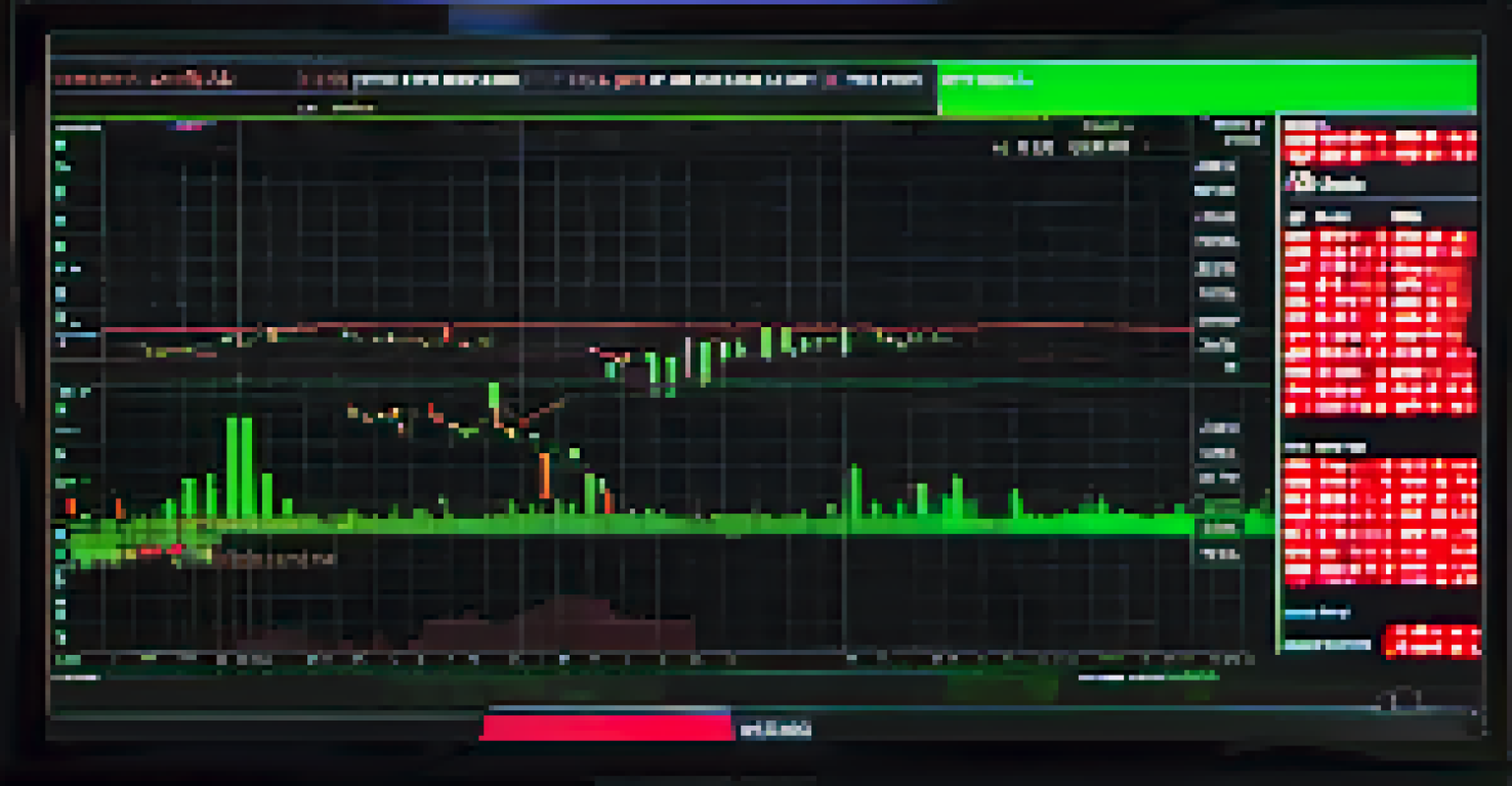Market Manipulation Tactics: Spoofing and Wash Trading in Crypto

What is Market Manipulation in Crypto Trading?
Market manipulation refers to practices that distort the normal functioning of the market. In the context of cryptocurrencies, this can lead to artificial price movements that may mislead traders. Essentially, it’s like playing a game where the rules are bent to benefit one player, often at the expense of others.
In investing, what is comfortable is rarely profitable.
Crypto markets are particularly vulnerable to manipulation due to their relatively low liquidity and regulatory gaps. This means that even a small number of trades can significantly impact prices. Understanding these manipulative tactics is crucial for anyone looking to navigate the crypto landscape safely.
Recognizing market manipulation tactics empowers traders to make informed decisions. By being aware of these unethical strategies, investors can protect themselves and potentially avoid significant losses.
Diving Deeper: What is Spoofing?
Spoofing is a tactic where a trader places large buy or sell orders with no intention of executing them. Instead, they aim to create a false sense of market demand or supply, influencing other traders' actions. Think of it like a mirage in the desert; it looks real, but it’s just an illusion.

This tactic can lead to price swings that benefit the spoofer when they later execute trades at favorable rates. Unfortunately, it can also mislead genuine traders who might react to the false signals. The challenge lies in how quickly such orders can be placed and canceled, often in milliseconds.
Understanding Market Manipulation
Market manipulation in crypto can create artificial price movements that mislead traders and compromise market integrity.
Spoofing can severely harm market integrity, leaving unsuspecting traders at a disadvantage. As the crypto market continues to grow, understanding and identifying spoofing becomes essential for maintaining a fair trading environment.
How Spoofing Affects Crypto Prices
The impact of spoofing on crypto prices can be both immediate and long-term. Initially, it can cause rapid price fluctuations, leading traders to make hasty decisions based on distorted market signals. This reaction can create a chain reaction, resulting in further price movements.
The market is a device for transferring money from the impatient to the patient.
For example, if a trader places a large sell order, it may convince others to sell, driving the price down. Once the spoofer cancels their order, they can buy back at lower prices, profiting from the chaos they created. This manipulation can create an unstable market environment that deters new investors.
Ultimately, such tactics can erode trust in the market, making it less appealing for legitimate traders. As confidence wanes, it becomes increasingly difficult for the market to stabilize and grow sustainably.
Understanding Wash Trading in Crypto Markets
Wash trading is another manipulation tactic where a trader simultaneously buys and sells the same asset to create misleading activity in the market. This can give the illusion of high trading volume and interest, tricking others into believing there's genuine demand for the asset. It’s like a staged performance, where everything seems exciting, but it’s all just for show.
By executing wash trades, manipulators can artificially inflate prices, making the asset appear more attractive to potential investors. This can lead to new participants entering the market, only to be left with losses when the truth comes to light. In essence, it’s a deceptive practice that can have severe consequences.
Recognizing Spoofing Tactics
Spoofing involves placing large orders without intention to execute, creating false market signals that can mislead genuine traders.
Wash trading undermines the fundamental principles of a fair market by distorting supply and demand. As new regulations emerge, it’s essential for traders to be aware of such practices to avoid falling victim to this manipulation.
The Consequences of Wash Trading
The consequences of wash trading extend beyond individual traders; they can impact the entire crypto market. When prices are artificially inflated, it can create a bubble that eventually bursts, leading to significant losses for unsuspecting investors. This not only affects those directly involved but can also tarnish the reputation of the entire crypto ecosystem.
Moreover, wash trading can deter legitimate institutional investors who are looking for a trustworthy space to engage. If they perceive the market as manipulated, they may choose to stay away, reducing overall liquidity and growth potential. This can create a vicious cycle that further destabilizes the market.
Ultimately, the ramifications of wash trading highlight the need for regulatory oversight and increased transparency. As the crypto landscape evolves, addressing these issues is crucial for fostering a healthy trading environment.
Detecting Spoofing and Wash Trading Tactics
Detecting spoofing and wash trading can be challenging, but certain indicators can help traders spot these manipulative behaviors. For instance, sudden spikes in trading volume without corresponding news or events may raise red flags. Similarly, if you notice large orders being placed and canceled quickly, it could indicate spoofing at play.
Tools and platforms are increasingly incorporating algorithms to identify suspicious trading patterns. By leveraging these resources, traders can gain insights into market behavior and make more informed decisions. Additionally, staying updated on market news and trends can also provide context that helps in identifying manipulation.
Impact of Wash Trading
Wash trading artificially inflates trading volume and can lead to significant losses for unsuspecting investors when the truth is revealed.
Ultimately, being vigilant and informed is key to navigating the crypto landscape. By understanding how to detect these tactics, traders can protect themselves and promote a healthier market.
Regulatory Responses to Market Manipulation
Regulators worldwide are becoming increasingly aware of market manipulation tactics like spoofing and wash trading. In response, they are implementing stricter rules and guidelines to protect investors and ensure market integrity. This includes monitoring trading activities and imposing penalties on those engaging in manipulative practices.
For example, the U.S. Commodity Futures Trading Commission (CFTC) has taken action against individuals and firms involved in spoofing. Such regulatory measures aim to deter potential manipulators and foster a fair trading environment. As these efforts continue to evolve, the crypto market may become more appealing to investors seeking a level playing field.

While regulations can be beneficial, they can also pose challenges for traders who must navigate compliance. Understanding these regulations and their implications is crucial for anyone actively participating in the crypto market.
Protecting Yourself from Market Manipulation
As a crypto trader, being proactive about protecting yourself from market manipulation is essential. This involves educating yourself on the tactics discussed, such as spoofing and wash trading, and staying aware of market trends. By developing a keen understanding of how these manipulative practices work, you can better navigate the crypto landscape.
Moreover, utilizing reliable trading platforms with built-in safeguards can help shield you from potential manipulation. Look for exchanges that prioritize transparency and have measures in place to detect and address suspicious trading behavior. This not only enhances your security but also contributes to the overall integrity of the market.
Ultimately, the more informed and cautious you are as a trader, the better equipped you'll be to avoid falling victim to market manipulation. Embracing a proactive mindset can empower you to engage in the crypto market confidently and responsibly.